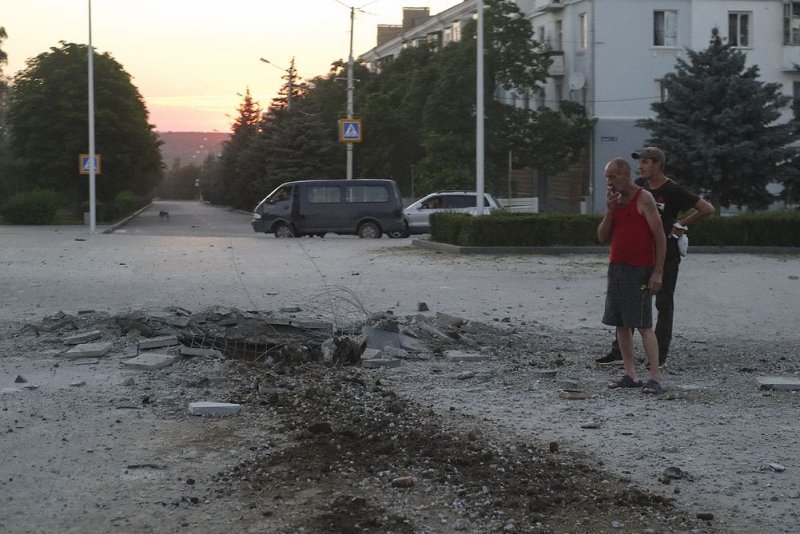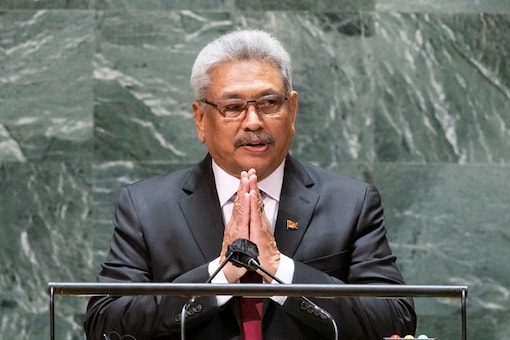Chinese researchers develop device they say can test loyalty of ruling party members
2022.07.04

Hefei Comprehensive National Science Center in eastern China's Anhui Province, displaying "artificial intelligence empowering party-building."
Researchers in the eastern Chinese province of Anhui say they have developed a device that can determine loyalty to the ruling Chinese Communist Party (CCP) using facial scans.
A short video uploaded to the Weibo account of the Hefei Comprehensive National Science Center on June 30 said the project was an example of "artificial intelligence empowering party-building."
The Weibo post was later deleted, but a text summary of the video, produced in honor of the CCP's July 1 anniversary, remained available on the Internet Archive on Monday.
"Guaranteeing the quality of party-member activities is turning into a problem in need of coordination," the text said.
"This equipment is a kind of smart ideology, using AI technology to extract and integrate facial expressions, EEG readings and skin conductivity ... making it possible to ascertain the levels of concentration, recognition and mastery of ideological and political education so as to better understand its effectiveness," the description said.
"It can provide real data for organizers of ideological and political education, so they can keep improving their methods of education and enrich content," it said.
It said the device relies on "emotionally intelligent computing," among other methods, to measure to what extent subjects "feel grateful to the CCP, do as it tells them and follow its lead."
In the video, as reported by Hong Kong's Ming Pao newspaper, a researcher in white walks into a room and sits in front of a screen to take a test, before receiving a test score and analysis onscreen.
Big Brother
Before the post was deleted, some comments slammed the idea as "high-tech brainwashing," while others referenced George Orwell's dystopian novel 1984, saying that "Big Brother" would be watching them.
Anhui-based sociologist Song Da'an said the post had been removed due to its political sensitivity.
"Hefei Comprehensive National Science Center has been using biotechnology to measure the loyalty of party members and cadres," Song said. "This shows that the CCP is becoming more and more totalitarian."
"In the logic of a totalitarian society, more and more emphasis is placed on refining controllability, and party members are regarded as screws [that could come loose] and potentially cause damage; they are the enemy of the machine," he said.
Song said the technology was based on the polygraph, used by security services to detect lying, which was itself based on the word association experiments of Swiss psychiatrist C.G. Jung.
"They are using this technology to treat all party members as potential anti-CCP agents," he said. "The use of these technology on officials demonstrates the sorry state of affairs within party ranks."
A Jiangxi-based current affairs commentator surnamed Zhang agreed.
"They are consolidating their power to better hold onto it," Zhang said. "That's what these people want; to consolidate their position."
"Would a regime that served the people be afraid of losing political power?"
'All-seeing eye'
A call to the Hefei Comprehensive National Science Center on Monday resulted in a recorded message saying "Sorry, the person you have called isn't authorized to take your call. Goodbye."
In 2018, authorities in Zhejiang province installed an "all-seeing eye" in a high-school classroom to spot students who weren't paying attention or who fell asleep in class, official media reported.
The new system at the Hangzhou No. 11 High School links up a surveillance camera to facial recognition software that tracks students' movements and facial expressions, according to the Zhejiang Daily newspaper.
The technology was part of a trial of software and surveillance systems that could be rolled out elsewhere as part of the development of "smart campuses," the paper said.
"The system ... can perform statistical analysis on students' behaviors and expressions in the classroom and provide timely feedback on abnormal behaviors," the report said.
Data collected by the system will be analyzed by the software, and overly inattentive or sleepy behavior will generate a prompt to the teacher to admonish the offender, it said.
The data could also be used to evaluate teachers' performance in the classroom, the report said.

















